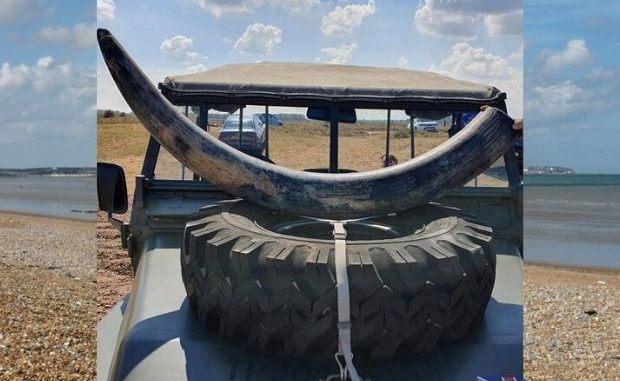
The Natural History Museum is working to identify a find at Sandwich Bay this week which is thought to be a Mammoth tusk.
What could turn out to be an extraordinary discovery was made on Monday when pilot boat coxwain Adam Cowell, partner Marie Swinbourne and children Isabella, nine, and Josh, 11, were taking a family walk.
Adam said: “We were collecting bits of driftwood and went to where there is a shipwreck (on the bay). The kids were jumping on the mud and I saw what I thought was a piece of wood. I pulled it and what came out was the tusk. I thought at first it was a whale bone but my partner’s son said he thought it was a tusk.
“My partner contacted the Natural History Museum and they told us how to preserve it so it doesn’t crack.
“It is now in the shed with wet cloths and clingfilm on it and we have some preserving liquid on the way.”
The family, from Deal, are now waiting for the museum to let them know the results of the identification on whether it is an elephant or a Mammoth tusk.
Tony Ovenden, of the Thanet and Sandwich Coastal Finds group, said in a post: “The tusk originates from a shipwreck. There are records of them turning up in fishing nets in the 1970s and 1980s.
“Most have been found to be porous due to time in the sea. So they are exhibits. With some research there is a provenance with this find.”
UPDATE From Natural History Museum:
“The tusk is curved but is not twisted into the three-dimensional spiral typical of mammoth (that would also indicate a prehistoric age).
!It is therefore very likely of a living elephant, but whether the African or Asian species cannot be determined without DNA analysis. The tusk has been artificially cut off near the base, probably as a way of separating it from the dead animal.
“It is obviously historical but it is not possible from its appearance to say how old it is”.

